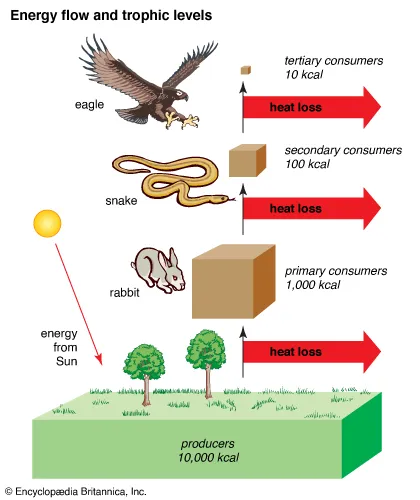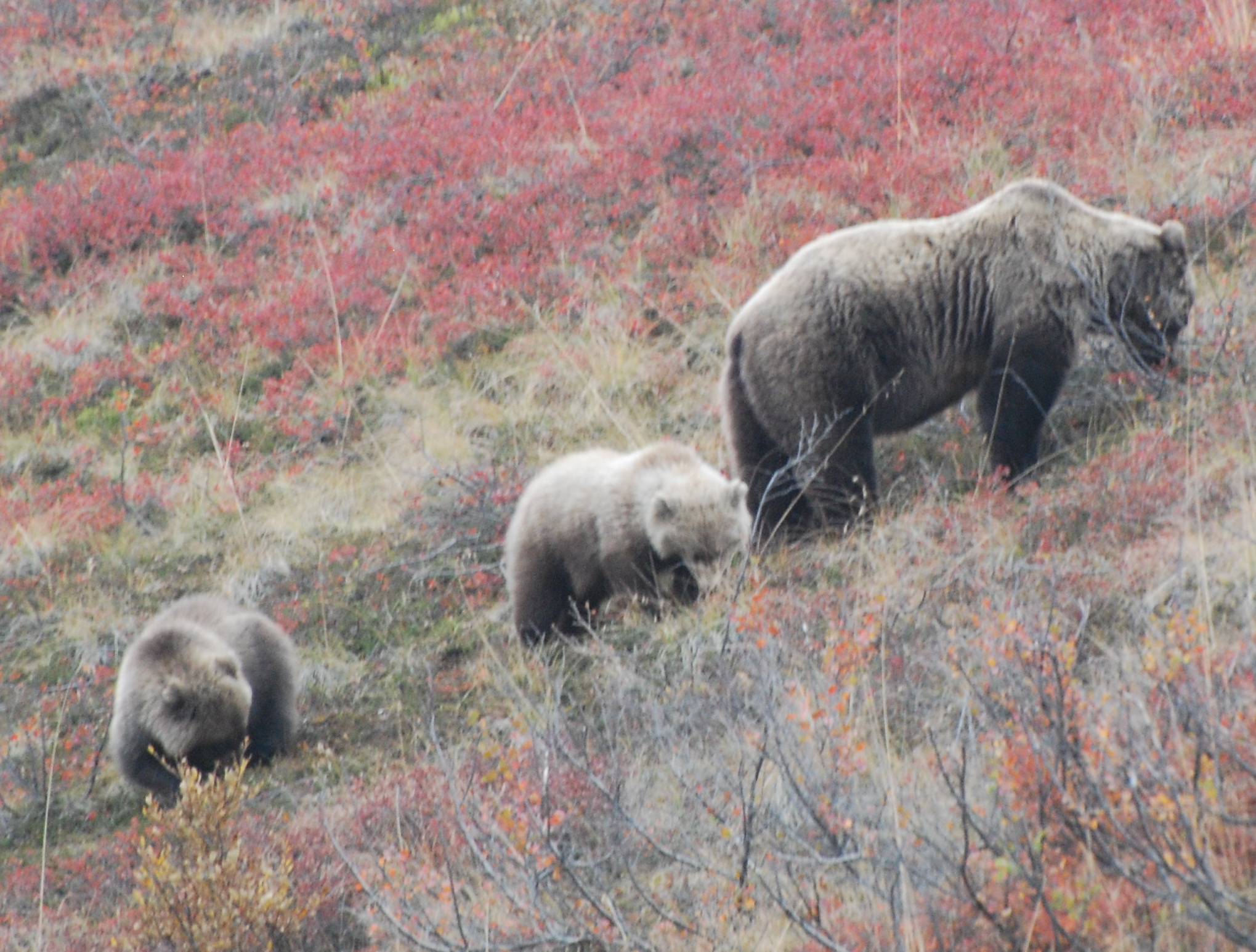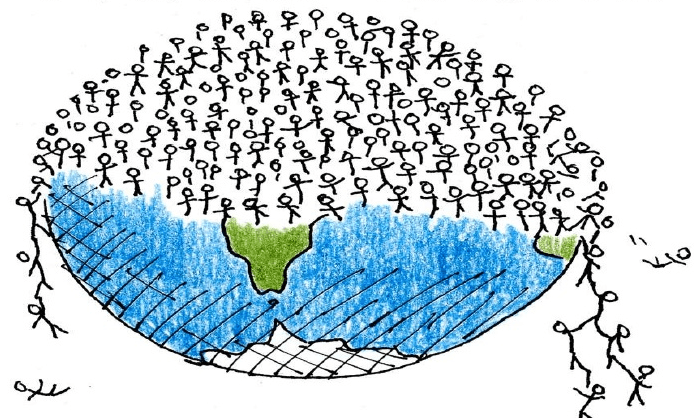Jed Quiaoit
Caroline Koffke
AP Biology 🧬
358 resourcesSee Units
Ecology is all about the interactions that organisms have amongst themselves and with their environment. This can be seen on a small scale, within populations, and on larger scales, in ecosystems and across the globe. The relationships that exist between organisms are complex and ever changing. We are constantly responding to our environment and those around us. Some of the largest problems plaguing our planet right now are the largest culprits to the changing landscape of ecosystems across the globe. 🙌
As you near the end of this course, Unit 8 serves as a culmination of all the previous units, bringing together important concepts to demonstrate how a system's interactions are closely tied to its available energy and ability to adapt to changes in its environment. When living systems interact, the communities and ecosystems within them will inevitably change as a result. The key to resilience in the face of disruption is biodiversity - the more diverse the system, the better equipped it is to maintain its health and thrive.
Energy is a fundamental aspect of all systems and the rate at which it flows through a system determines the success of the species within it. As an AP student, you should have a solid understanding of how biological systems function and how disruptions can affect them. You should be able to accurately analyze and predict the outcomes of different scenarios and understand the importance of biodiversity in maintaining the health and resilience of a system.
Key Terms
- Metabolism
- Exponential growth
- Logistic growth
- Carrying capacity
- Density-dependent factors
- Density-independent factors
- Population
- Community
- Ecosystem
- Abiotic
- Biotic
- Mutualism
- Commensalism
- Parasitism
- Predation
- Competition
- Food web
- Trophic level
- Niche
- Cooperation
- Keystone species
- Producer
- Consumer
Sample Big Idea Questions
Similar to unit 7.0, I'll give you my perspective on the following questions that you might encounter in this unit. At the end of the unit, I'd like you to come back to this page and see if you agree, disagree, or have something to add! 🤔
- How does diversity among and between species in a biological system affect the evolution of species within the system?
Diversity among and between species in a biological system can affect the evolution of species within the system in several ways. For example, a high level of biodiversity allows for a greater variety of genetic traits, which can increase the chances of successful adaptation to changing environmental conditions. Additionally, the presence of diverse species can also increase the stability of ecosystem functions, making the system more resilient to disruptions.
- How does the acquisition of energy relate to the health of a biological system?
The acquisition of energy is crucial for the health of a biological system. Organisms within a system rely on the flow of energy to survive and reproduce. A disruption in the flow of energy can have a domino effect on the system, affecting the survival and reproduction of multiple species. The efficiency of energy flow within a system also affects the diversity and abundance of species within it.

Source: Britannica
- How do communities and ecosystems change, for better or worse, due to biological disruption?
Communities and ecosystems can change for better or worse due to biological disruptions. For example, a disruption that causes the loss of a keystone species can have cascading effects on the entire ecosystem, leading to a decline in biodiversity and ecosystem function. On the other hand, a disruption that allows for the introduction of a new species can lead to an increase in biodiversity and ecosystem function.
- How does a disruption of a biological system affect genetic information storage and transmission?
A disruption of a biological system can affect genetic information storage and transmission in various ways. For example, if a population of a species is severely reduced, the genetic diversity of that species may also be reduced, leading to a loss of genetic information. Additionally, if the population recovery is slow, the genetic transmission will also be affected, leading to a population with a reduced genetic diversity.
- How do species interactions affect the survival of an ecosystem?
Species interactions play a crucial role in the survival of an ecosystem. For example, predator-prey interactions help to control population sizes and prevent overpopulation, which can lead to a decline in biodiversity. Mutualistic interactions, such as pollination and seed dispersal, help to maintain the health and productivity of the ecosystem. Any disruption of the interactions between species can affect the ecosystem's function and stability.
Unit Breakdown
8.1 Environmental Responses
Organisms have evolved to possess a variety of behavioral and physiological mechanisms to respond to changes in their environment. These mechanisms allow them to adapt to changes in their surroundings and increase their chances of survival.
For example, organisms can alter their behavior in response to changes in the availability of food or water, or in response to changes in temperature or light levels. They can also change their physiology to respond to changes in the environment. For example, some organisms can change their coloration to match their surroundings, or alter the chemical composition of their skin or body fluids to deter predators.
In addition to responding to changes in the environment through behavioral and physiological mechanisms, organisms also exchange information with one another. This can happen through a variety of means, such as chemical signaling, vocalization, or visual cues. For example, when a predator is present, prey organisms may change their behavior to hide or flee, or may release a chemical signal to warn other individuals of the danger. 💬

Source: Wikimedia
Similarly, when a food source is depleted, foraging animals may change their behavior and search for food elsewhere, or may release a chemical signal to inform other individuals of the change in their environment.
Exchanging information with other organisms can also change behavior. For example, when a group of animals is foraging, they may exchange information about the location of food sources, which can influence the behavior of the group as a whole. Similarly, when a group of animals is facing a predator, they may exchange information about the predator's location or behavior, which can influence the group's behavior in response to the predator.
8.2 & 8.7 Energy Flow and Ecosystem Disruptions
Organisms use energy to maintain organization, grow, and reproduce. In order to survive and reproduce, organisms must acquire energy from their environment. The process of acquiring energy is known as metabolism, and the energy obtained is used for various functions, such as maintaining the organization of cells and tissues, growing, and reproducing. 🏋️
For example, plants acquire energy from the sun through photosynthesis, which converts light energy into chemical energy that can be used for growth and reproduction. Animals, on the other hand, acquire energy by consuming other organisms. They must expend energy to find and capture food, and then use the energy acquired from food to maintain their own organization, grow, and reproduce.
Changes in energy availability can result in changes in population size. If energy is abundant, population size may increase. Conversely, if energy is scarce, population size may decrease. For example, a population of animals may experience an increase in population size if there is an abundance of food available, while a decrease in population size may occur if food becomes scarce. Similarly, a population of plants may experience an increase in population size if there is an abundance of light and water, while a decrease in population size may occur if light and water become scarce.
We can also note that changes in energy availability can also affect the population size of species that are part of the food chain. For example, if a population of prey species decreases, the population size of their predators may decrease as well. In addition, energy availability also affects the biodiversity within the ecosystem, as some species may be better adapted to thrive in low-energy environments, while others may be better adapted to thrive in high-energy environments.
8.3 & 8.5 Population and Community Ecology
Reproduction without constraints can result in the exponential growth of a population. When resources are unlimited and there are no limiting factors such as predators or disease, populations can reproduce at a rapid rate. This results in an exponential increase in population size, as each generation contributes to the growth of the population. 📈
However, in reality, resources are often limited and populations are subject to a variety of constraints, such as competition for resources, predation, and disease. These constraints can limit population growth and prevent populations from reaching their full potential.
Source: Biology LibreTexts
The structure of a community is measured and described in terms of species composition and species diversity. Community structure refers to the number and types of species that live in a specific area. Species composition refers to the relative abundance of different species within a community, while species diversity refers to the number and types of species present in a community.
One commonly used metric for measuring species diversity is the Simpson's Diversity Index, which is a measure of how evenly distributed the different species are within a community. The index ranges from 0 to 1, with a higher value indicating a more diverse community. The Simpson's Diversity Index is calculated by taking the probability that two individuals chosen at random from the community belong to different species. The formula for calculating the Simpson's Diversity Index is:
D = 1 - Σ(n/N)^2, where D is the Simpson's Diversity Index, n is the number of individuals of a particular species, and N is the total number of individuals in the community.
8.4 Density's Role Within Populations
A population can produce a density of individuals that exceeds the system's resource availability, leading to overpopulation. Overpopulation occurs when the number of individuals in a population exceeds the carrying capacity of the environment, which is the maximum number of individuals that the environment can sustain. When this happens, the population is said to be overpopulated, and the availability of resources becomes a limiting factor.
Overpopulation can lead to a variety of negative consequences, such as competition for resources, increased disease transmission, and reduced reproductive success. For example, when a population exceeds the carrying capacity of an environment, the available resources such as food, water, and shelter may become scarce, leading to intense competition among individuals for access to these resources. In addition, overpopulation can lead to overcrowding, which can increase the spread of disease, as well as reduce the success of reproduction.

Source: Nuclear News
Overpopulation can also have negative impacts on the environment. For example, overpopulation of a particular species can lead to overconsumption of resources, leading to the degradation of habitats, which can have cascading effects on other species in the ecosystem. Also, overpopulation can put strain on the ecosystem's ability to recycle nutrients and other resources, leading to pollution and other negative environmental impacts. 😔
8.6 Biodiversity
Biodiversity within an ecosystem provides a buffer against environmental changes by increasing the number of options that the ecosystem has for adapting to changes. For example, a diverse array of plants in a forest ecosystem can help to prevent soil erosion, provide food for animals, and regulate the climate. Similarly, a diverse array of animals in an ecosystem can help to control pests, pollinate plants, and disperse seeds. 🛡️
In contrast, ecosystems with low biodiversity are more vulnerable to disturbances because they lack the diversity of options that can help them to adapt to changes. For example, an ecosystem with only a few plant species is more susceptible to disease or insect outbreaks, which can wipe out the entire population. Similarly, an ecosystem with only a few animal species is more susceptible to predation or hunting, which can also wipe out the entire population.
Keystone species, producers, and essential abiotic and biotic factors contribute to maintaining the diversity of an ecosystem. Keystone species are species that play a critical role in maintaining the structure and function of an ecosystem.
For example, sea otters are a keystone species in the kelp forest ecosystem, as they control sea urchin populations, which in turn allows kelp to thrive. Producers, such as plants, are also essential for maintaining the diversity of an ecosystem, as they provide the energy that supports all other life in the ecosystem. Essential abiotic and biotic factors, such as water, light, and nutrients, are also critical for maintaining the diversity of an ecosystem.
Browse Study Guides By Unit
🧪Unit 1 – Chemistry of Life
🧬Unit 2 – Cell Structure & Function
🔋Unit 3 – Cellular Energetics
🦠Unit 4 – Cell Communication & Cell Cycle
👪Unit 5 – Heredity
👻Unit 6 – Gene Expression & Regulation
🦍Unit 7 – Natural Selection
🌲Unit 8 – Ecology
📚Study Tools
🧐Exam Skills

Fiveable
Resources
© 2025 Fiveable Inc. All rights reserved.